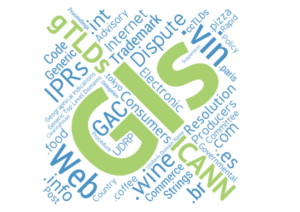 Following “Brexit” on 31 January 2020, the UK has started to negotiate agreements with its partners to replace the FTA to which it was a party as a member of the EU. In this context, protecting intellectual property rights (and within them, GIs) is an integral part of the UK negotiating objectives.
Following “Brexit” on 31 January 2020, the UK has started to negotiate agreements with its partners to replace the FTA to which it was a party as a member of the EU. In this context, protecting intellectual property rights (and within them, GIs) is an integral part of the UK negotiating objectives.
Among the agreements which are already in force, there are the ones with the EU , Japan, the EEA-EFTA States (Norway, Iceland and Liechtenstein), Ukraine, Georgia, Moldova, Andean Countries, Australia and New Zealand.
Japan:
Following the UK-Japan Comprehensive Economic Partnership Agreement (CEPA), which entered into force on 1st January 2021, as of February 2024 37 UK GIs have been protected in Japan and 39 Japanese GIs in the UK . Each of these GIs went through a scrutiny process, which included examination and opposition procedures. The agreement also provides procedures for adding additional GIs. A robust level of protection is provided (art. 14.29), which covers inter alia the use of a geographical indication identifying a good for a like good not meeting the applicable requirement of specifications of the geographical indication even if: the true origin of the good is indicated; the geographical indication is used in translation or transliteration; or the geographical indication is accompanied by expressions such as “kind”, “type”, “style”, “imitation”, or the like.
EFTA States, Ukraine, Georgia, Moldova, Andean Countries:
With respect to the EFTA States, the continuation agreement between the UK and the EEA-EFTA States was reached in 2019. By virtue of this, the British GIs protected under the EU-EEA EFTA Agreement at the moment of Brexit continued to benefit from protection in the EFTA States (as well as the ones of the EFTA States in the UK). In 2021, the parties reached a new agreement (the UK-EEA EFTA States Agreement), under which the mutual protection of GIs by parties is regulated under sub-section 7.2.4. The parties have also agreed to adding new GIs to their respective lists (ANNEX XXIV).
The same approach (continuation agreement) was adopted in the FTAs the UK concluded with Georgia, Ukraine and Moldova and the Andean Countries agreement.
Australia and New Zealand:
On the other hand, in the agreement with Australia and the one with New Zealand, no concrete rules on GI protection were agreed. In the Australia UK Agreement, A-UKFTA, parties agreed that they will rediscuss GI issues after their respective FTAs with the EU. In other words, if Australia agrees to protect EU GIs under a new Australian GI system, then the UK can also put forward its GIs for protection in Australia. To date, the EU and Australia have reached no agreement.
Likewise, no commitments have been made on GIs between the UK and New Zealand. According to Art. 17.33, the parties shall enter into consultations to review the Section on GIs if New Zealand signs an international agreement with a non-party that includes obligations requiring it to adopt any substantive changes to its GI regime. In view of the EU-NZ FTA, which recently came into force and made fundamental changes to the GI regime of New Zealand, it would be interesting to observe if the UK-NZ agreement will undergo any modifications with the prospect of protecting British GIs in New Zealand as well.


